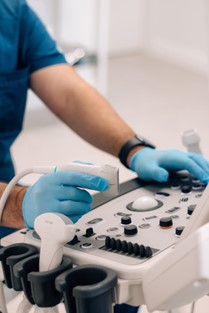Peripheral Arterial Disease (PAD) and Peripheral Vascular Disease (PVD) can be painful to manage. Since they are commonly diagnosed alongside other conditions, it can become just one more thing on a long list. That’s why Vascular Centers of America is here to provide relief.
Vascular Centers of America (VCA) specializes in diagnosing, treating, and addressing the causes of PAD. Patients can expect the highest quality of care at any of their locations.
Vascular Centers of America takes care to support their patients in every way they can. Learn more about what Vascular Centers of America does, and how they help patients below.
Where to Find Vascular Centers of America
Vascular Centers of America exists in three different locations. One is in Southfield, Michigan, another is located in Manhattan, New York, and the third is in Pheonix, Arizona. Two more sites are being planned for Atlanta, Georgia and Houston, Texas.
Each of these locations supports VCA in providing quality care to every patient. Offices are open from 8:30 AM until 5 PM, Monday through Friday.
How VCA Helps Patients
With many specialists in treating Peripheral Arterial Disease, Vascular Centers of America provides several great services. The main services they offer include:
- Diagnostic Angiography
- Screenings
- PAD Intervention
- Stent Placement
- Atherectomy
The standard process involves an initial consultation with follow-up appointments.
During the initial consultation, specialized nurses and doctors will discuss with patients about their symptoms. Then, to further evaluate a case of PAD, they will run a few tests before making a diagnosis.
Various angiography and ultrasound tests will help with determining a diagnosis. Vascular Centers of America strives to be as non-invasive as possible in their testing and procedures.
After a diagnosis has been made, VCA’s specialists will create a plan that details effective treatments, recommended lifestyle changes, suggested physical therapy, and whether any procedures will be necessary.
Follow-up appointments typically involve educating the patient on their treatment plan, discussing options, and generally providing guidance.
Depending on the severity of the PAD, there may be more or fewer visits to VCA.
 Peripheral Artery Disease Explained
Peripheral Artery Disease Explained
At the heart of VCA’s mission is the empowerment of patients through education about Peripheral Arterial Disease (PAD), sometimes referred to as Peripheral Vascular Disease (PVD). While the terms may seem interchangeable, it’s crucial to understand that PAD is a distinct subset of PVD, embodying its own specific set of challenges. This knowledge forms the cornerstone of VCA’s approach to comprehensive patient care.
Both PAD and PVD involve the vascular system outside of the heart. While PVD has no symptoms in some cases, PAD results in reduced blood flow, usually in the legs and feet.
PVD may have no effect on the blood vessels in the body, but can result in leg spasms. This is referred to as Functional PVD. PAD, on the other hand, reduces blood flow because of fat build-up in the blood vessels.
This reduced blood flow can result in further complications if left untreated. In some cases, this can lead to gangrene, stroke, or heart attack, and may even require amputation.
Luckily, PAD is treatable. Common treatments include lifestyle changes, medication, and minimally invasive procedures.
Meet the VCA Experts
Vascular Centers of America could not provide the excellent care they do without their talented doctors and quality leadership. VCA is lucky to have several great doctors with a plethora of certifications and experience.
The CEO is Mordechai Grun, who has many years of experience in the medical field as a leader. Under his leadership, VCA has grown from just one location to three, with two more coming soon.
Then, there are the medical specialists who provide the necessary knowledge to treat PAD successfully.
VCA’s Chief Medical Officer is Hamid Sattar, M.D., F.A.C.C., F.S.C.A.I., who has over 12 certifications.
Doctor Sattar’s staff includes Assad Sattar, M.D., James Armstrong, D.O., F.A.C.O.S., Christopher J. Varughese, M.D., and Jim Bates, D.O. Collectively, they have more than 15 certifications along with experience in residencies and fellowships.
Final Thoughts
Rest assured, if you are someone who is grappling with Peripheral Arterial Disease or Peripheral Vascular Disease and reside near one of Vascular Centers of America’s facilities, you’re in capable hands. Backed by years of expertise and armed with state-of-the-art technology, VCA’s dedicated team of medical experts is poised to provide patients with the highest standard of care and support on their journey to better health.



 Peripheral Artery Disease Explained
Peripheral Artery Disease Explained


